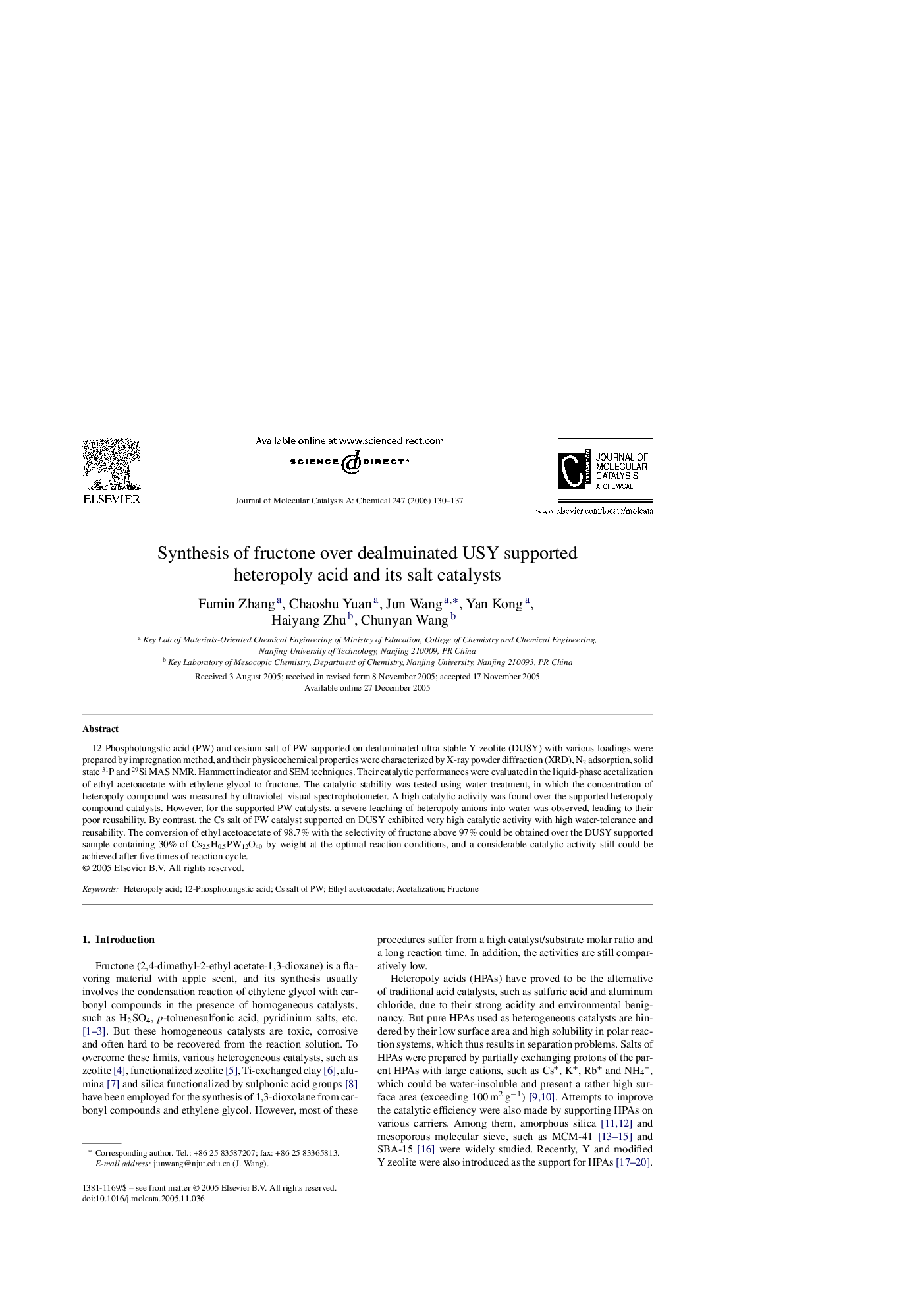| Article ID | Journal | Published Year | Pages | File Type |
|---|---|---|---|---|
| 69269 | Journal of Molecular Catalysis A: Chemical | 2006 | 8 Pages |
12-Phosphotungstic acid (PW) and cesium salt of PW supported on dealuminated ultra-stable Y zeolite (DUSY) with various loadings were prepared by impregnation method, and their physicochemical properties were characterized by X-ray powder diffraction (XRD), N2 adsorption, solid state 31P and 29Si MAS NMR, Hammett indicator and SEM techniques. Their catalytic performances were evaluated in the liquid-phase acetalization of ethyl acetoacetate with ethylene glycol to fructone. The catalytic stability was tested using water treatment, in which the concentration of heteropoly compound was measured by ultraviolet–visual spectrophotometer. A high catalytic activity was found over the supported heteropoly compound catalysts. However, for the supported PW catalysts, a severe leaching of heteropoly anions into water was observed, leading to their poor reusability. By contrast, the Cs salt of PW catalyst supported on DUSY exhibited very high catalytic activity with high water-tolerance and reusability. The conversion of ethyl acetoacetate of 98.7% with the selectivity of fructone above 97% could be obtained over the DUSY supported sample containing 30% of Cs2.5H0.5PW12O40 by weight at the optimal reaction conditions, and a considerable catalytic activity still could be achieved after five times of reaction cycle.
Graphical abstractThe catalytic stability of 30%PW/DUSY, 30%Cs2.5PW/DUSY and 30%PW/SiO2 in acetalization of ethyl acetoacetate with ethylene glycol into fructone is compared under the optimal reaction conditions, as shown in Fig. 12. It is revealed that the 30%PW/SiO2 catalyst exhibits an initial activity with conversion of ethyl acetoacetate being 95.6% and selectivity of fructone above 97%, which is comparable with those over DUSY supported samples. However, 30%PW/SiO2 loses its catalytic activity completely after three reaction cycles, which indicates a very quick deactivation. The 30%PW/DUSY also deactivates quickly, and a low conversion of 40.9% remains at the fifth reaction cycle. In contrast, for 30%Cs2.5PW/DUSY, a rather high conversion of 66.2% still could be achieved after five times of reaction. It should be noted that the decease of conversion in Fig. 12 arising from the catalyst lost during the separation and transfer of the catalyst for the next reaction recycle cannot be excluded. Figure optionsDownload full-size imageDownload as PowerPoint slide
